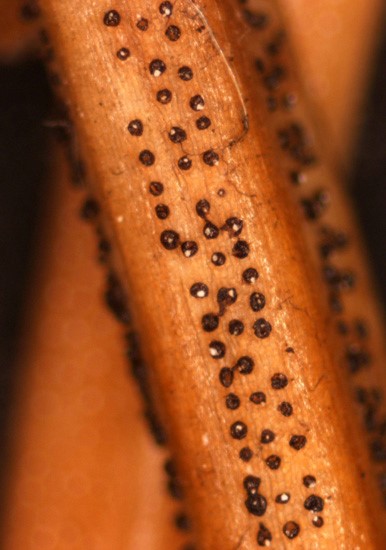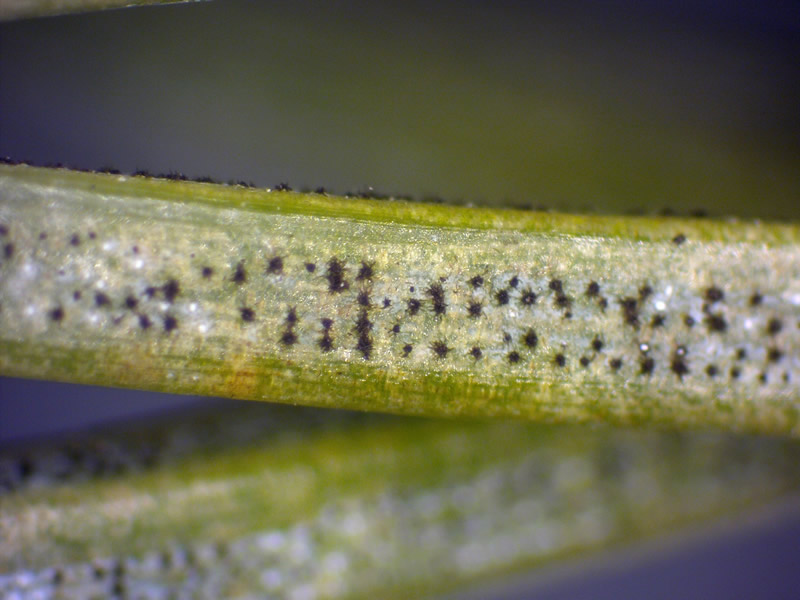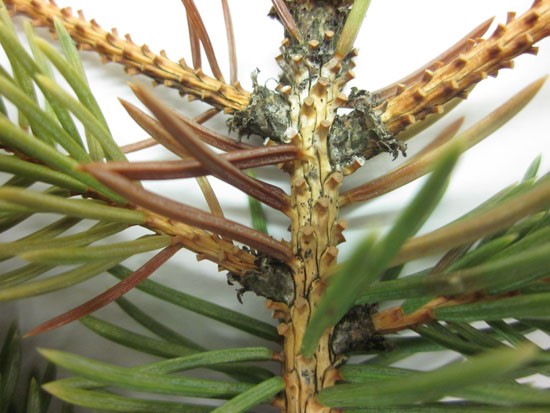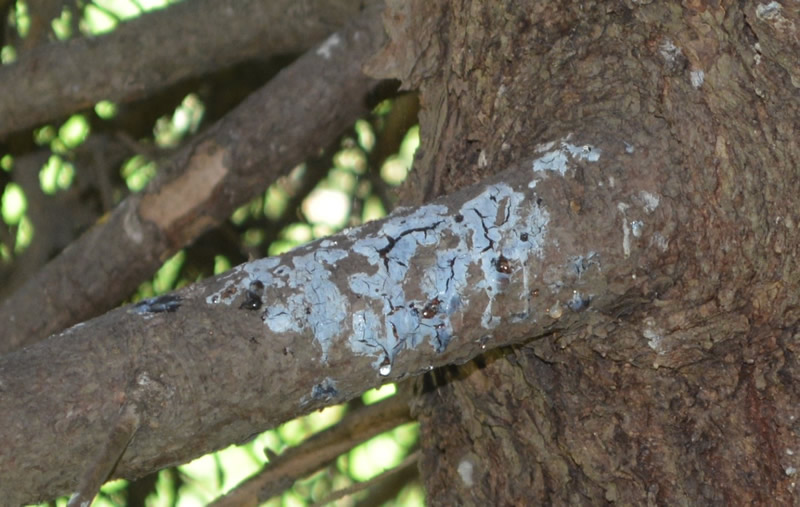Issue 7, July 16, 2021
Common Spruce Diseases
As Diane Plewa noted in her June 2021 Plant Clinic Sample Summary, the U of I Plant Clinic continues to receive numerous evergreen samples infected with needle blight and needle cast diseases. These types of samples, and reports of sick/dying spruce trees are common occurrences each growing season. The following are the most frequently diagnosed spruce diseases by the plant clinic:
Rhizosphaera Needle Cast
Rhizosphaera needle cast is a fungal disease capable infecting several conifer species. Spruce species, especially blue Colorado spruce (Picea pungens var glauca), tend to be the most susceptible, while Norway spruce has some resistance.
Most infections occur during a roughly 2-month period following bud-break. Symptoms, however, do not appear until fall, and are most evident the following spring. Diseased needles will initially be yellow, but then transition to purple or brown color before dropping from the tree (normal, healthy needles remain attached for several years). Premature defoliation results in a thin canopy and branches with tufts of new needles on the branch ends. Rhizosphaera will generally start low in the tree and advances upward through the canopy. With the aid of a hand lens or microscope, look for fungal fruiting bodies protruding from the needle pores. Fruiting bodies have smooth edges and develop in perfectly aligned rows on the needles. Be aware, the disease symptoms and fruiting bodies can easily be confused with Stigminia needle blight. Several consecutive years of severe Rhizosphaera infections cause the lower branches to die.
To manage this disease, plant less susceptible spruce and evergreen species. Promote good air circulation with adequate plant spacing, pruning lower limbs, and weed management. Some formulations of chlorothalonil, mancozeb, and copper hydroxide are labeled to control Rhizosphaera and other needle cast diseases. Fungicides protect new growth from infection and may help restore moderately infected trees to a good appearance. At least two years of fungicide applications are required. Read the labels carefully. Some chlorothalonil formulations have label restrictions that advise “DO NOT use on blue spruce.” I suspect the product may cause the needles to lose their desirable blue color.

Black fruiting bodies of Rhizosphaera. Note the smooth margins.
Stigmina Needle Blight
Stigmina lautii is another fungal organism that we have seen a lot of during the last several years. Unfortunately, there has not been a lot of research on this fungus, so it is not known if it is a disease pathogen or an opportunistic fungus infecting stressed plants. The symptoms and fungal fruiting bodies of Stigmina are similar to those listed for Rhizosphaera needle cast. One difference is that the fruiting bodies of Stigmina appear to have tendrils giving them a spider or mite-like appearance (may require a bit of imagination). If your spruce is diagnosed with this Stigmina, you should try to relieve any potential tree stresses. Conflicting reports have indicated limited success with fungicides for control of the Stigmina.

Black fruiting bodies of Stigmina needle blight. Note the fringed or tendril-like margins.
SNEED (Sudden Needle Drop)
(SNEED) Sudden Needle Drop (also sometimes called Spruce Needle Drop) has been found on Norway, white (Black Hills) and blue Colorado spruce trees. The fungus Setomelanomma holmii has been found associated with symptoms of sudden needle drop, but it has not been proven that this fungus is the cause of the SNEED. Symptoms of SNEED are yellowing and the eventual browning of older needles. Affected branches may be scattered through the canopy. By autumn, all of the needles on the affected branches fall off except the newest needles on the tips of the branches. Eventually, the canopy of the tree thins, sometimes leaving bare branches. SNEED is nearly impossible to diagnose without the aid of a plant diagnostic lab. This is because it can only be identified by looking at the spores under a compound microscope. The fungus produces small, black, round spore-producing structures on the stems and bud scales of affected spruce. However, other harmless fungi growing on spruce trees also produce similar small black structures on spruce branches.

Small black fruiting structures of SNEED on spruce branches (photo credit Diane Plewa)
Cytospora (Leucostoma) Canker
Cytosprora canker is a fungal disease on stressed spruce trees. The disease is most damaging to blue Colorado spruce. The first noticeable symptom is sporadic branch dieback. Closer examination of symptomatic branches often reveals bark with small, white patches of dried sap and resin. Cankered areas may be close to the base of tree limbs. These cankered areas eventually girdle the branch and cause branch death. Unfortunately, there are no effective chemical controls for cytospora canker. Management for this disease starts with sanitation. Prune out infected branches in late winter or during periods of dry weather. Sanitation may require several years of pruning and monitoring for new canker development. Other control options focus on alleviating any tree stress and improving tree vitality. Water during drought. Apply an organic mulch under the full spread of the branches

Resin and dried sap on canker spruce branch.
Author:
Travis Cleveland